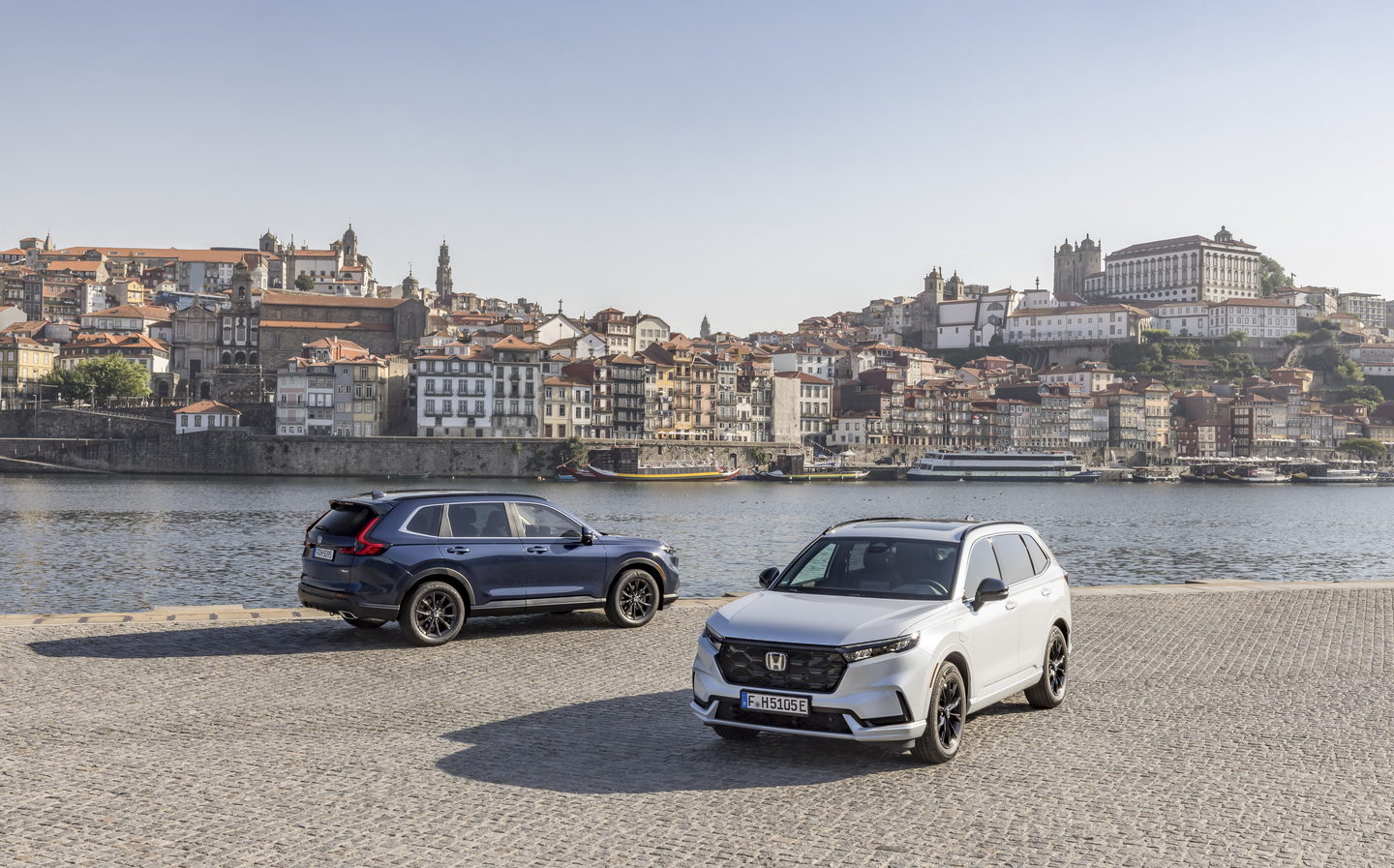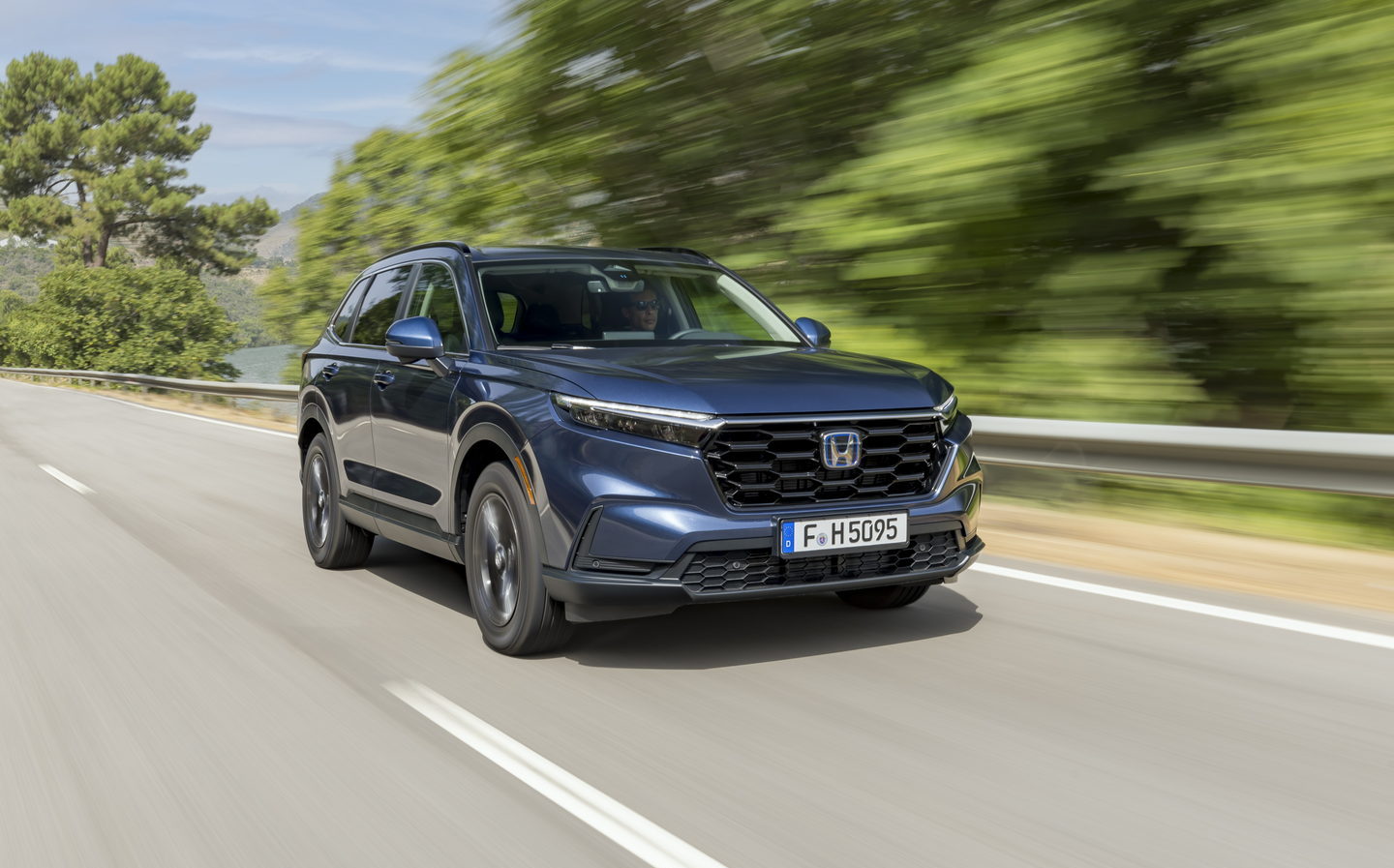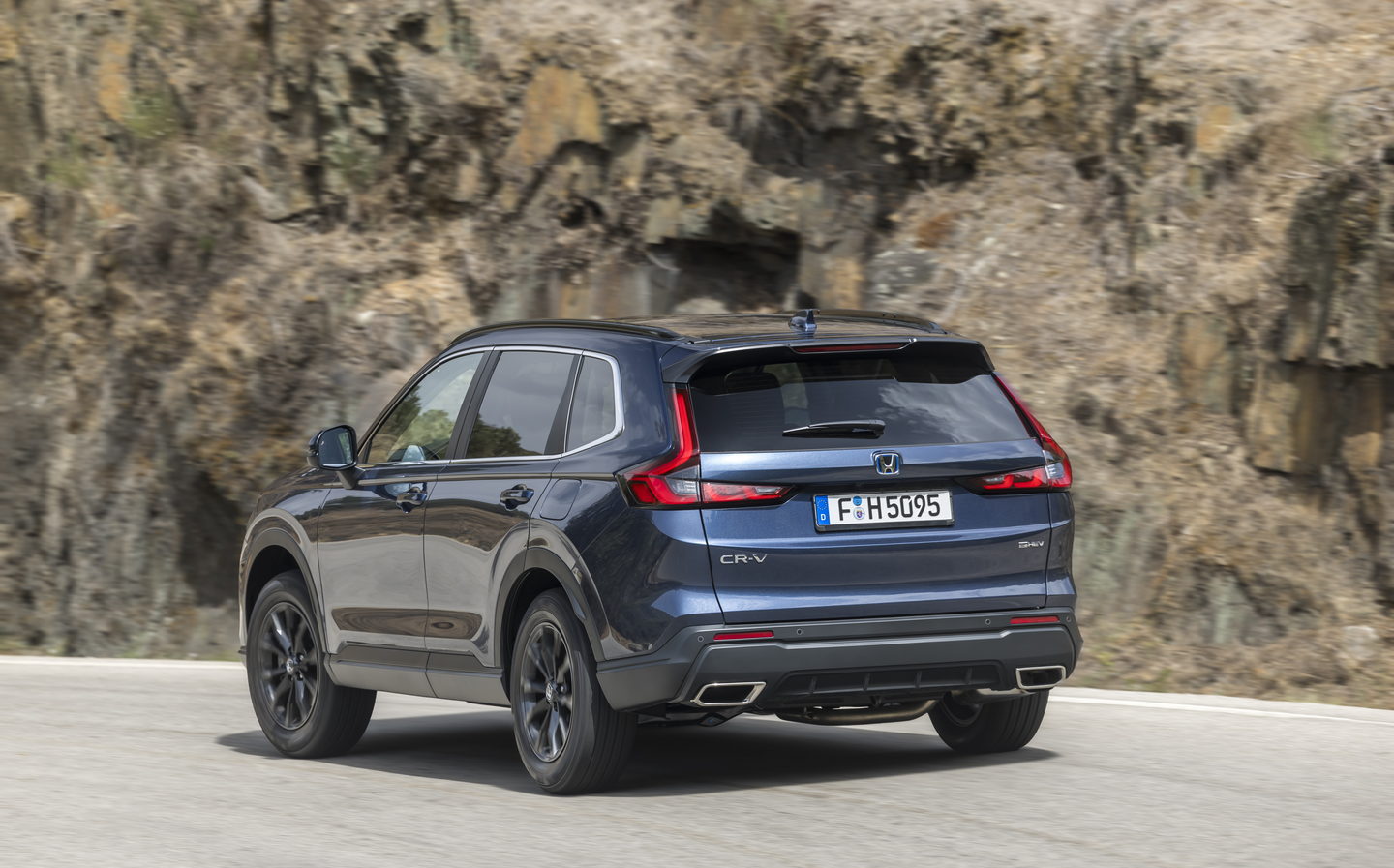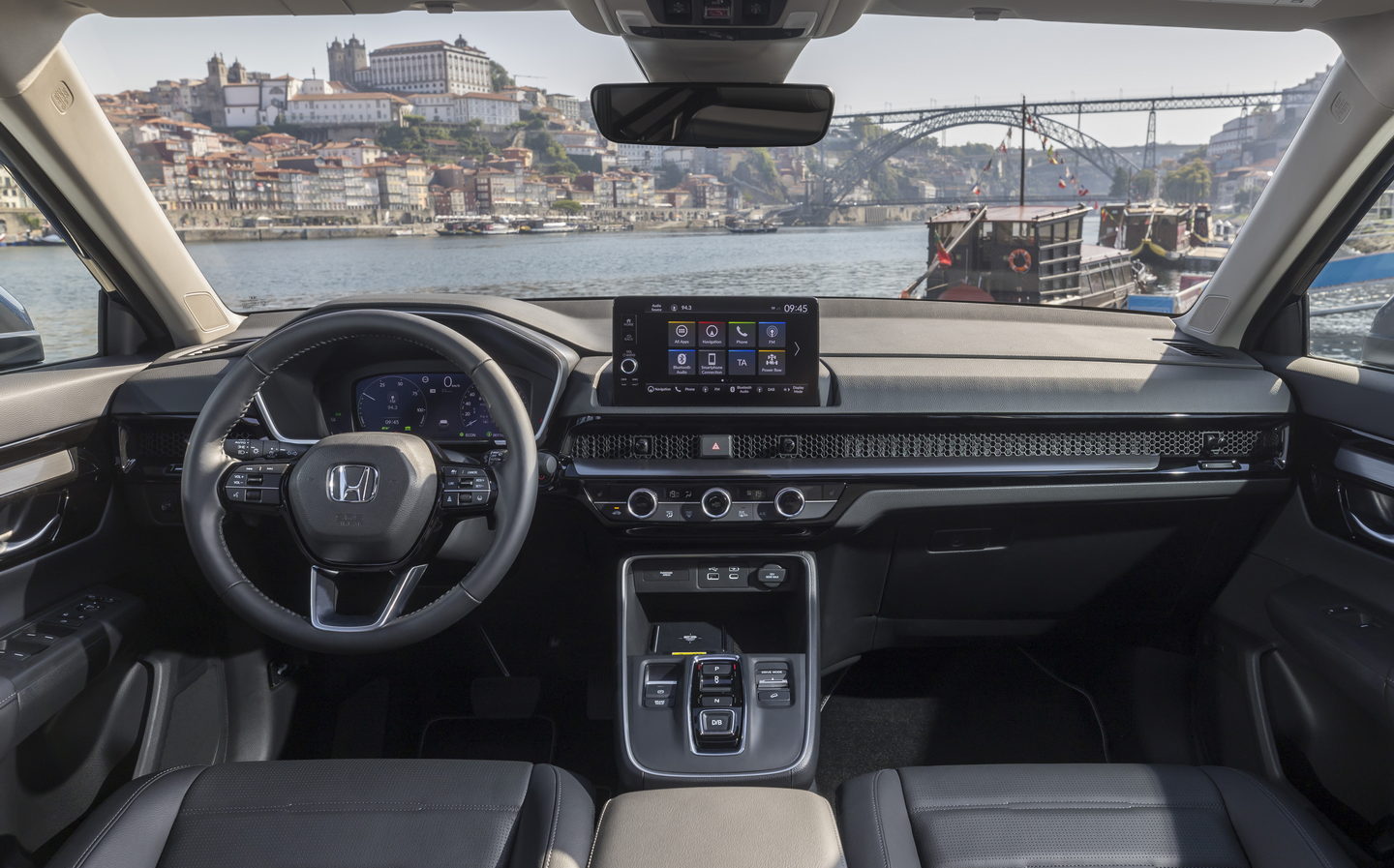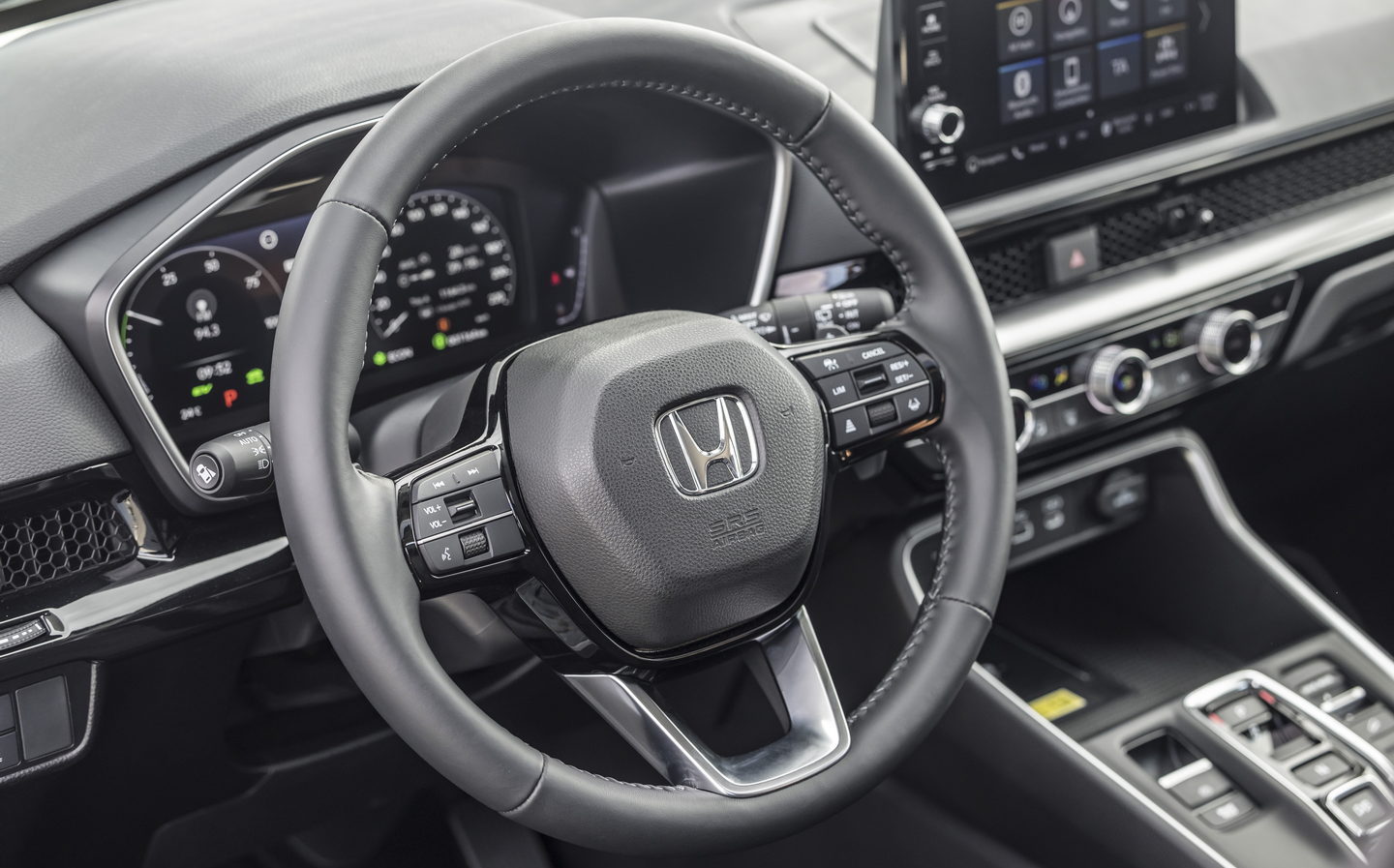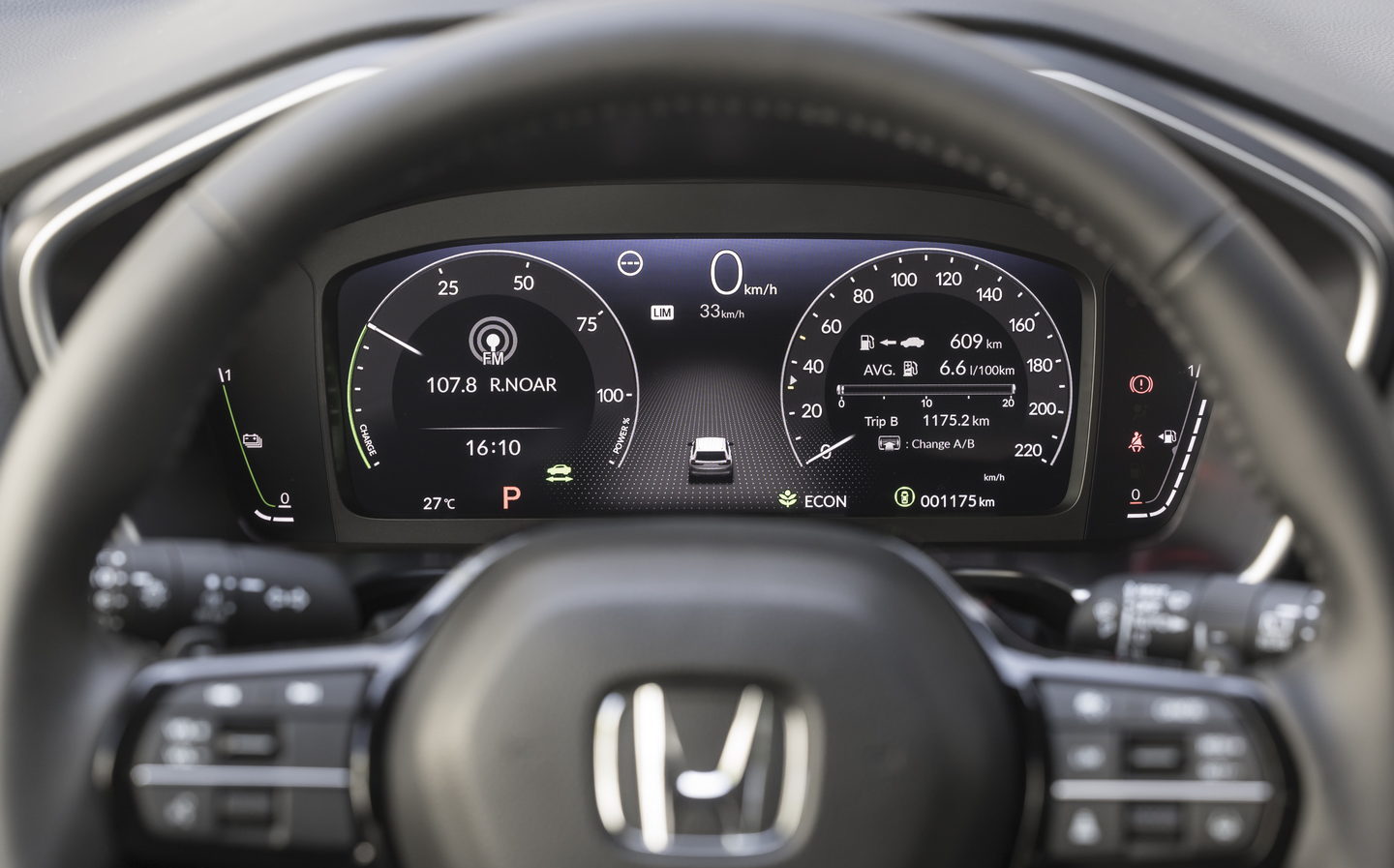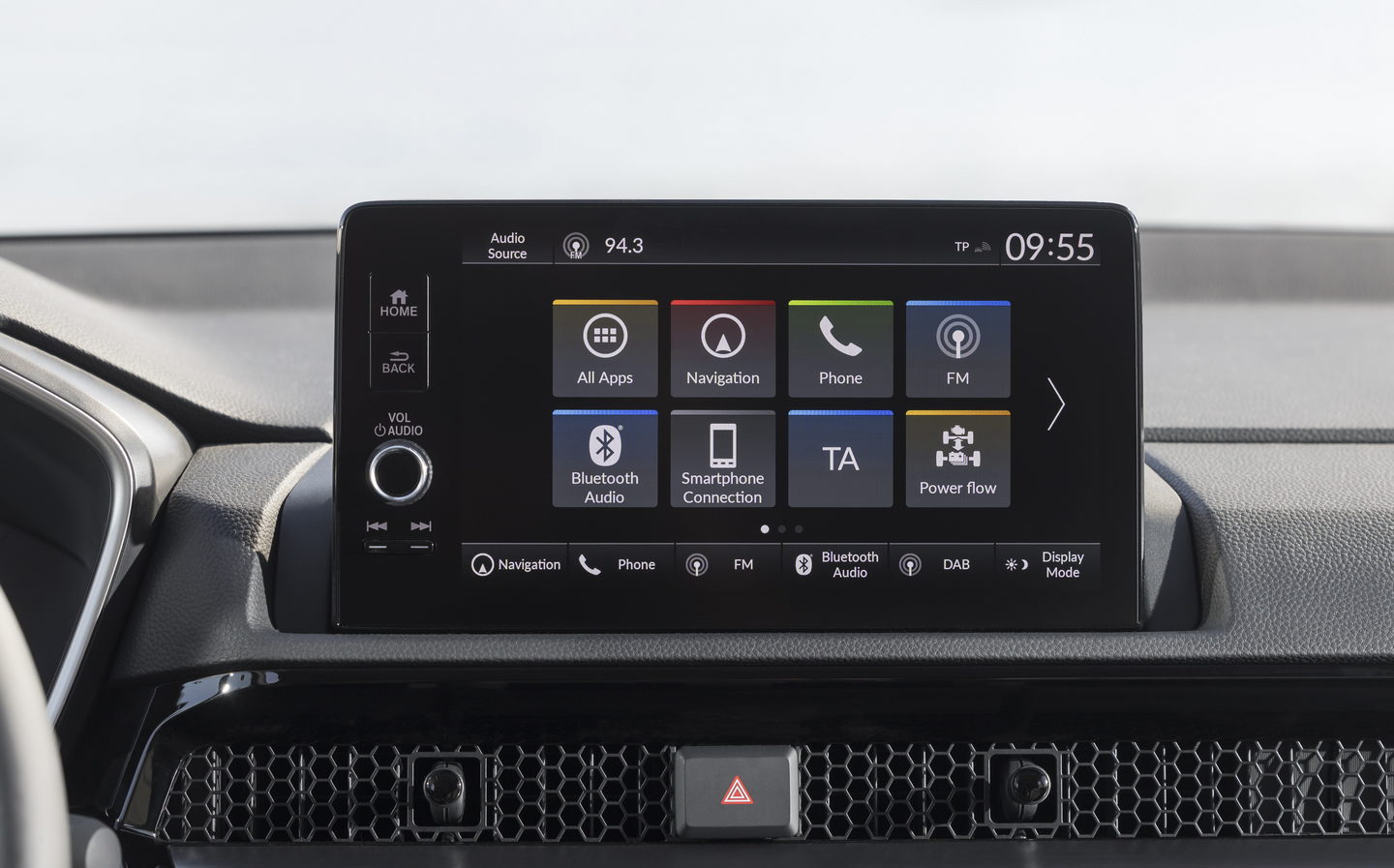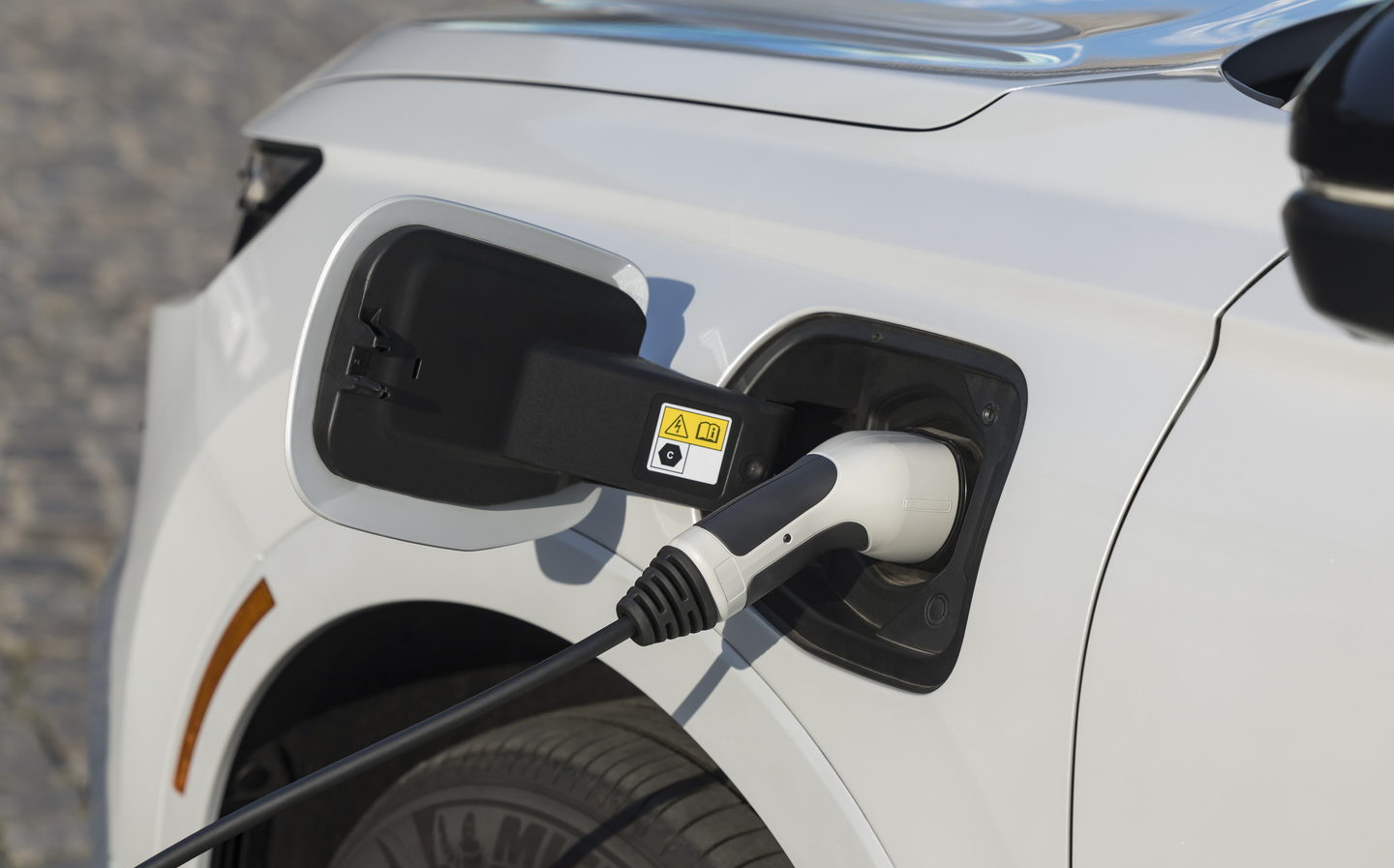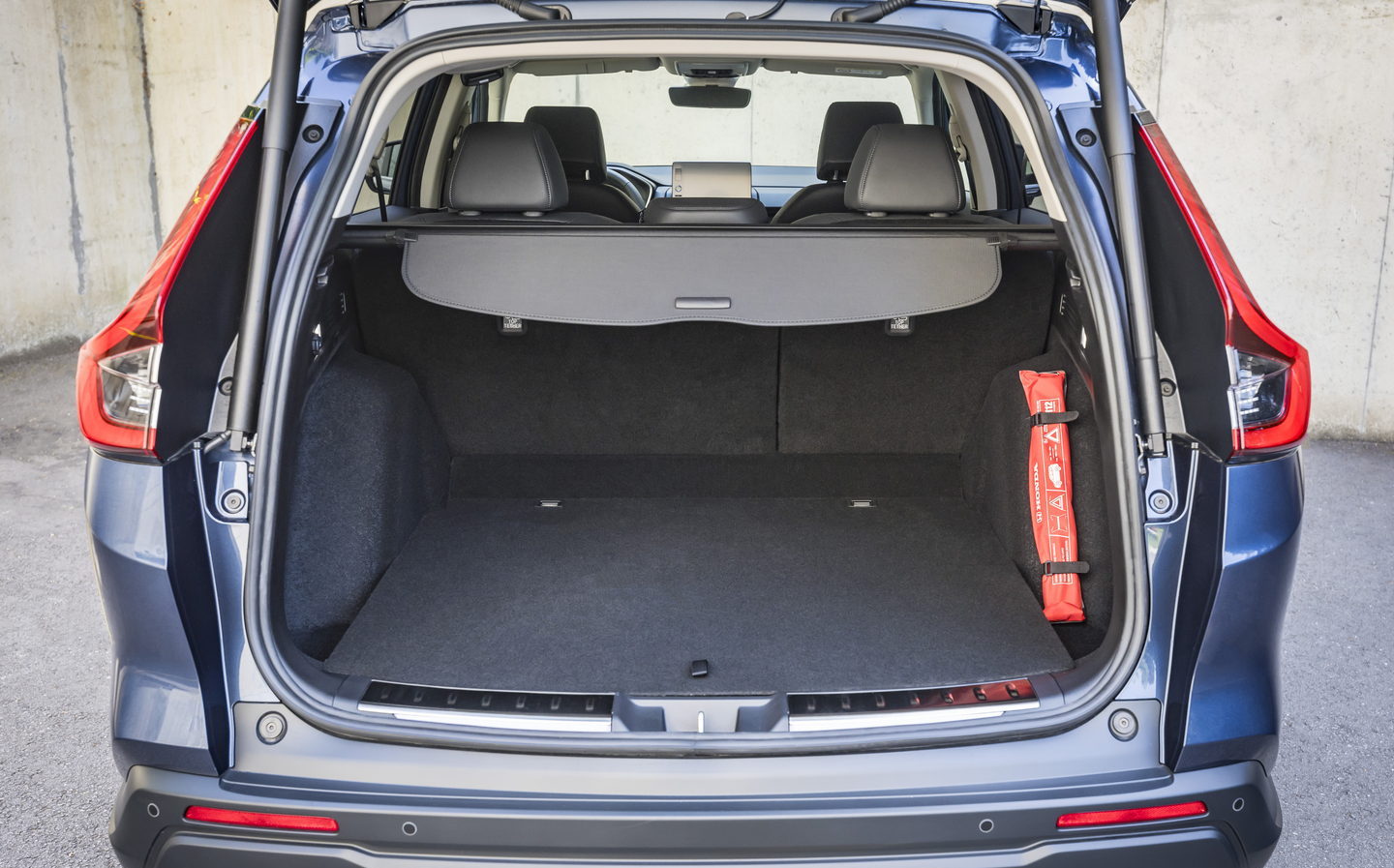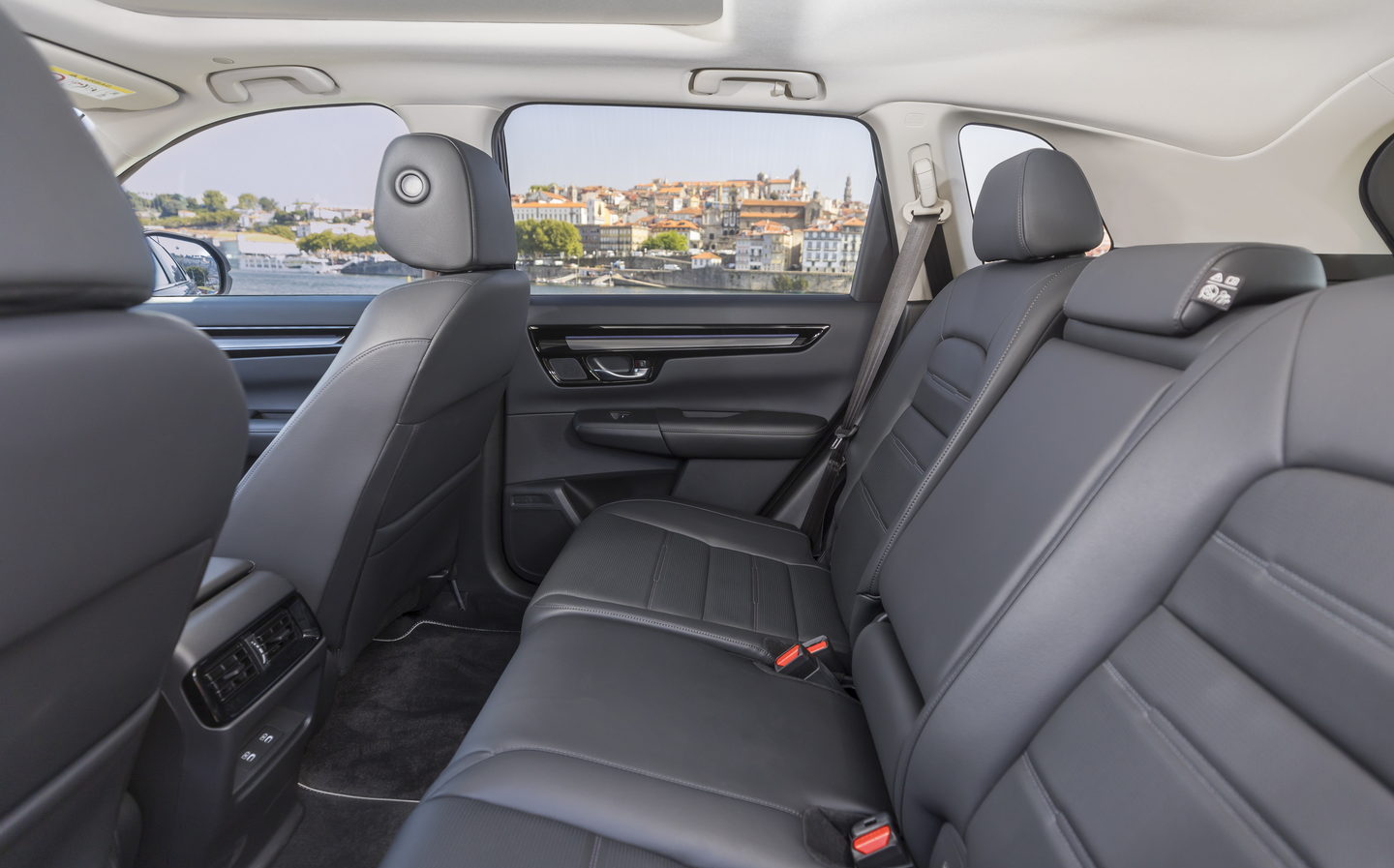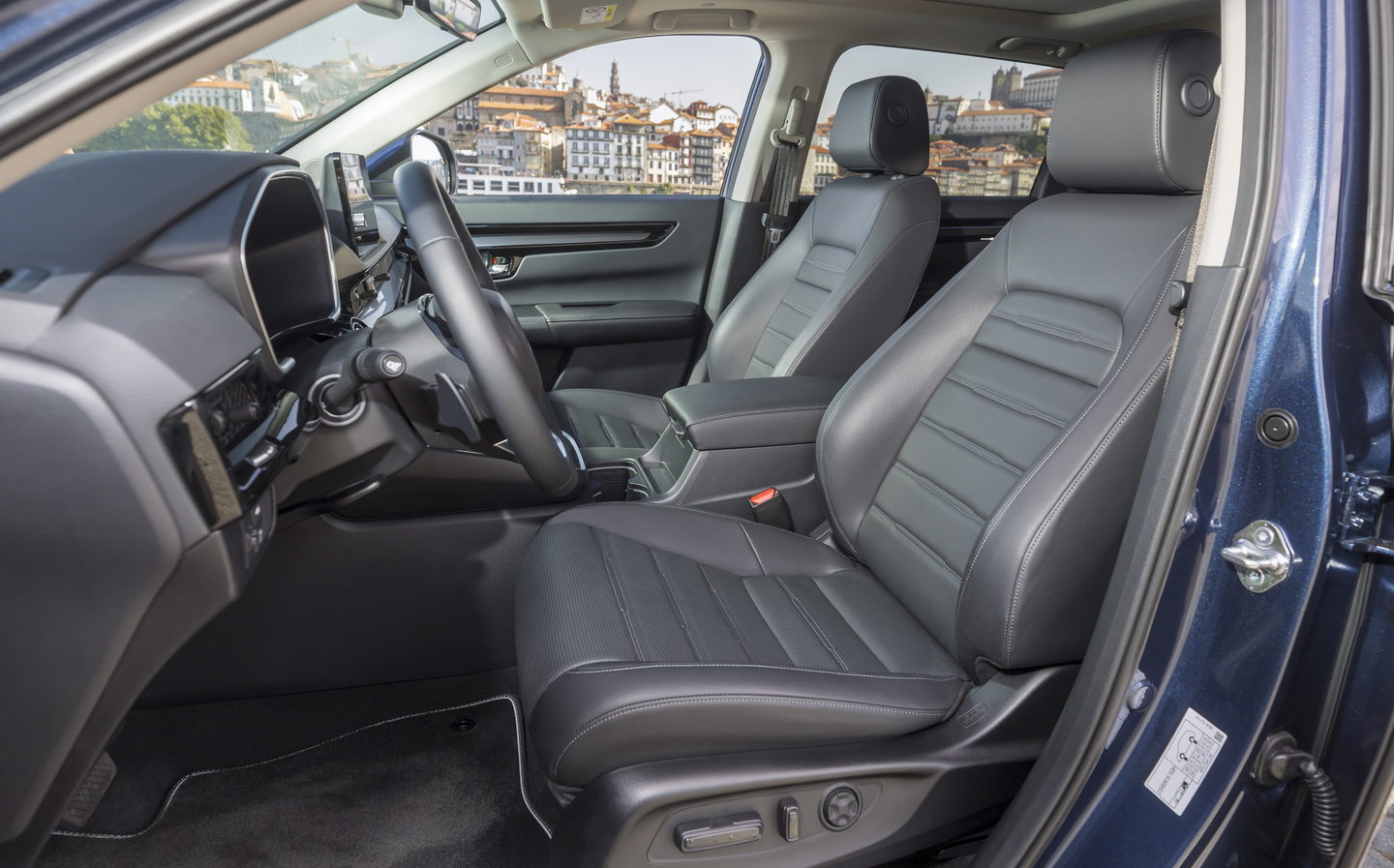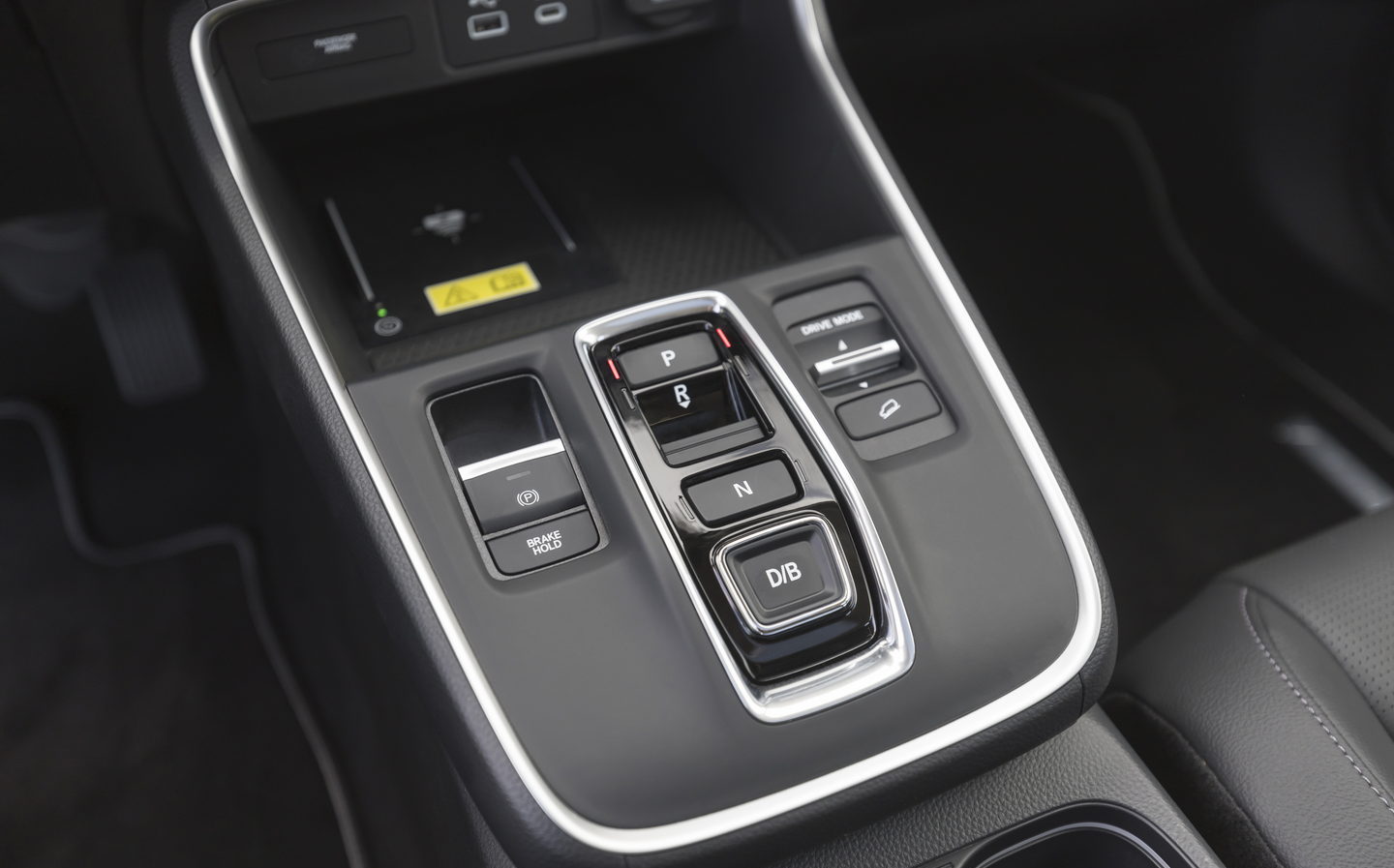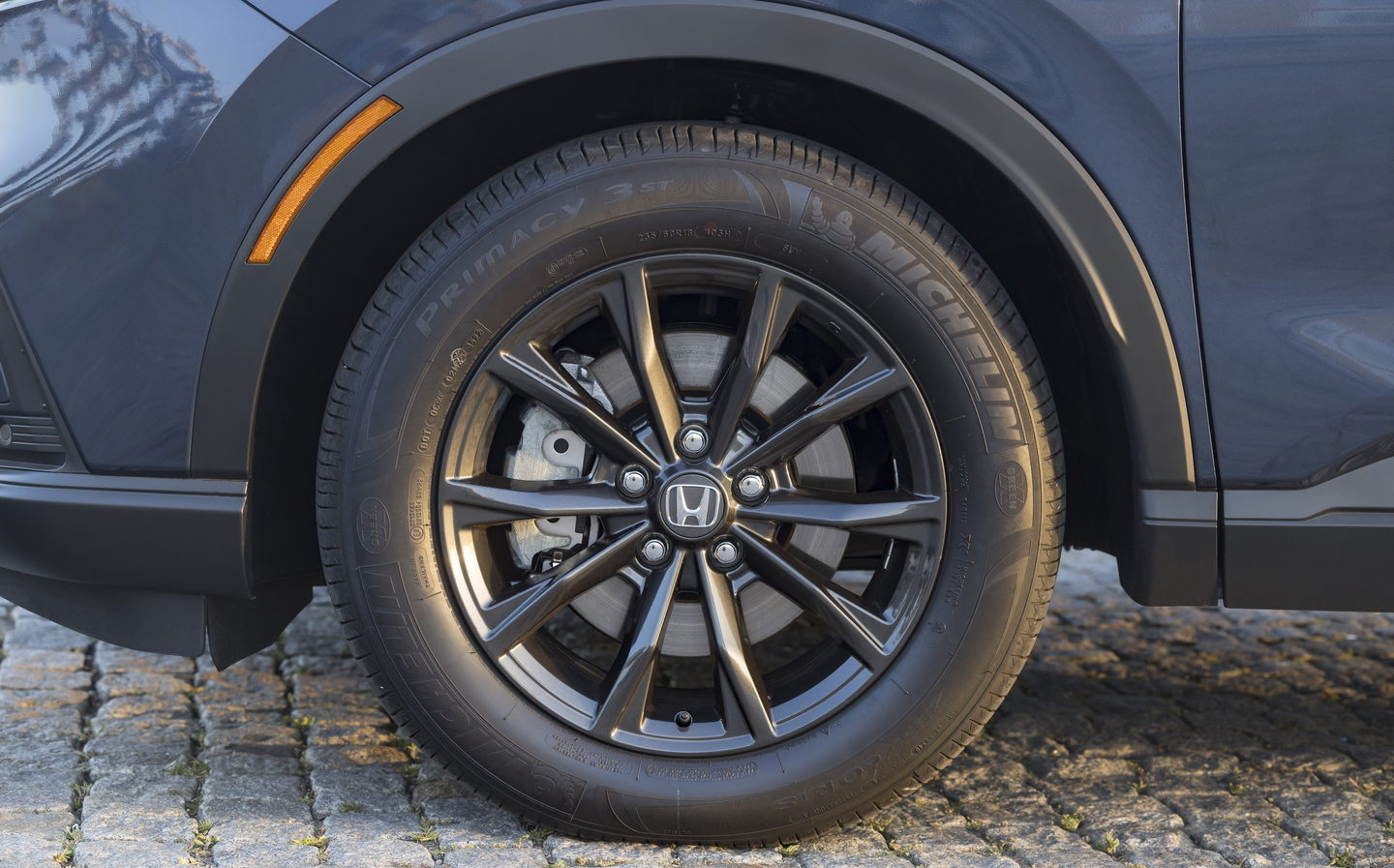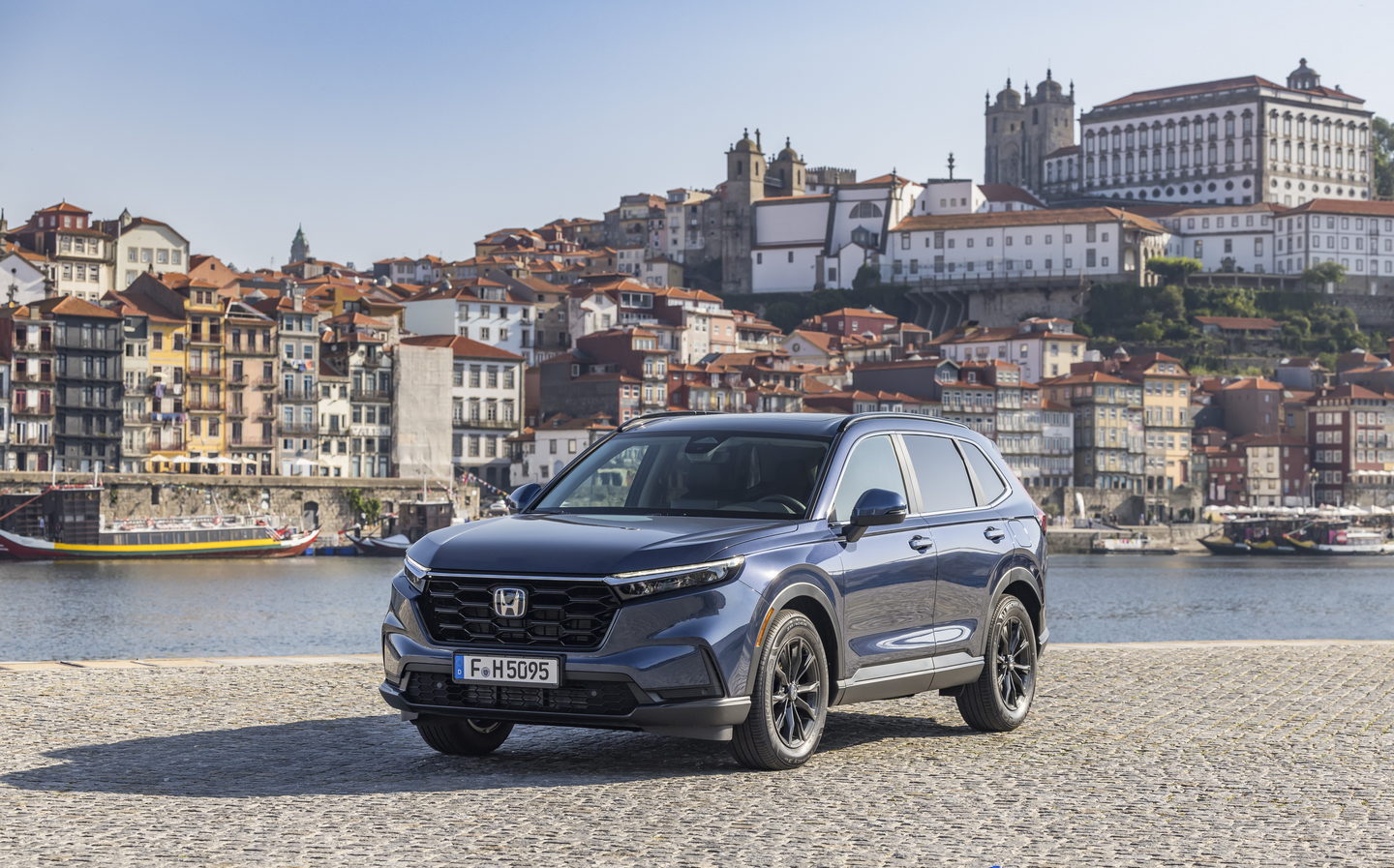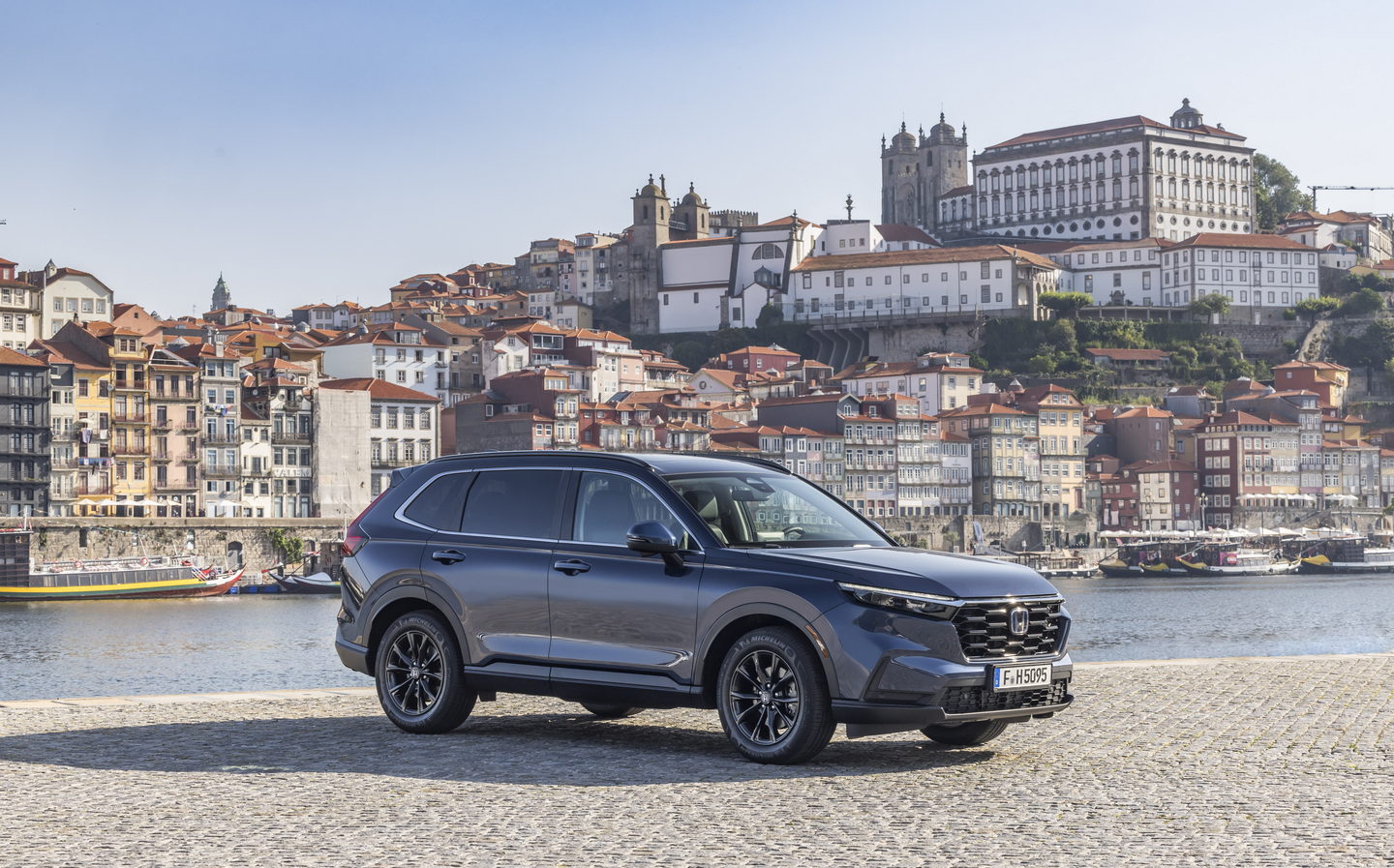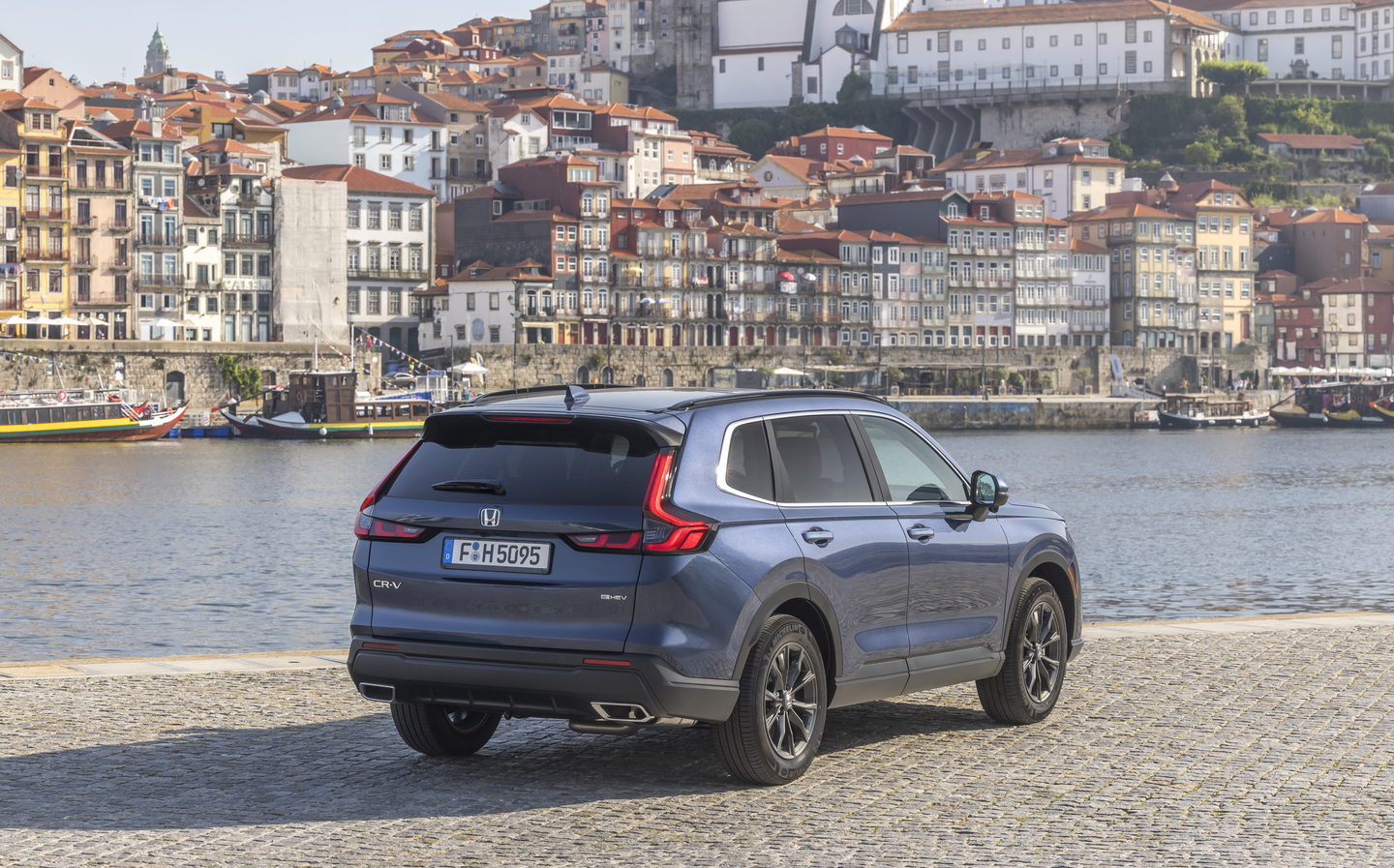Honda CR-V 2023 review: Plug-in hybrid power for new-generation of Qashqai rival
No seven-seat option this time around
Having slipped into the new car market in 1995, the CR-V has become a true stalwart in the Honda range. Today, almost 30 years after the first-generation car was launched, it is one of the world’s best-selling SUVs and the pinnacle of Honda’s growing SUV line-up in the UK, which now includes the smaller HR-V and ZR-V models.
Alongside those relative newcomers, the outgoing CR-V was beginning to feel a bit dated. Ageing technology and a last-generation interior showed it up, so Honda has brought out a new, sixth-generation car that aims to fix the CR-V’s issues and build on the existing car’s impressive space and hybrid system.
The thoroughly modern-looking car you see here is the result, but will it make the biggest Honda SUV an even more appealing proposition?
Exterior design and rivals
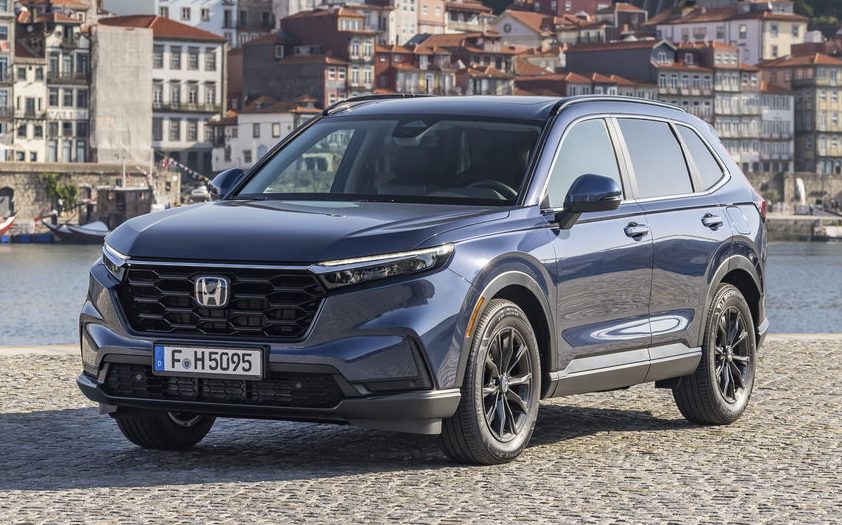
Sometimes Hondas can look a bit wacky (anyone remember the deeply impractical CR-Z coupé, streamlined Insight mk.1 or overly-angular Civic mk.10?), but the Japanese carmaker is now firmly in a period of sensible design. Even the outgoing CR-V had a bit of funkiness about it, but the new model seems to have chopped in any attempt at visual intrigue.
To us, the grille looks as though it came from the Suzuki S-Cross, while the body shape resembles a far-eastern knock-off Volvo XC90. Or it would, were it not for the rear lights that verge into BMW territory across the bootlid.
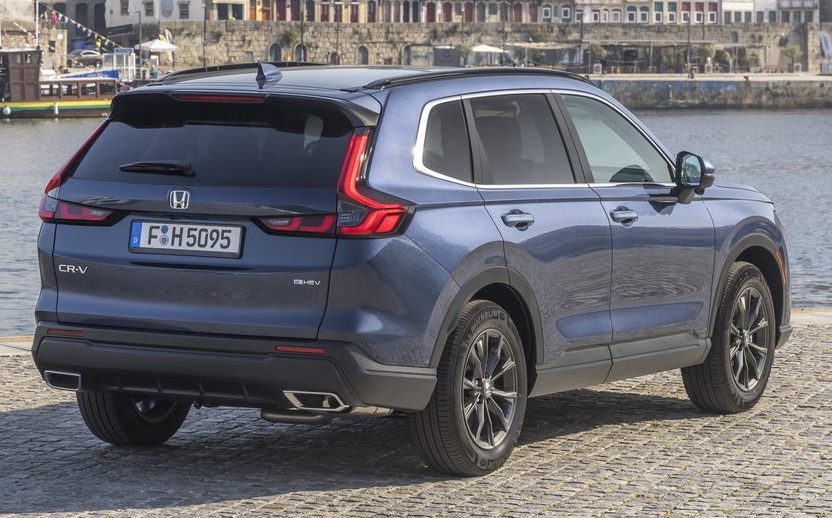
Then there are the flanks, which put us in mind of the old Mitsubishi Outlander.
In short, the new CR-V is a bit generic, and if you took the badges away you’d have a hard time recognising it as a Honda.
But while the firm may have passed up the opportunity to make the CR-V distinctive, nobody is going to call it ugly. In fact, it’s arguably better looking than the Toyota RAV4 and Nissan X-Trail with which it competes, and it’s certainly no less attractive than the Skoda Kodiaq or Volkswagen Tiguan Allspace. But while its looks probably won’t win any new customers (as the current Kia Sorento and forthcoming Hyundai Santa Fe might), but they won’t repel any would-be buyers either.
Interior and practicality
The interior was among the biggest weak spots in the outgoing CR-V, and Honda has worked hard to remedy that for the new model.

The new dashboard design is inherited from the Civic and ZR-V, characterised by the tablet-style touchscreen perched at the top of the dash, and the wide grille that stretches the width of the car and houses the air vents.
Honda has added some visual interest with faux metallic trim strips, and it’s generally pretty modern, if a little bit dull.
Still, it’s well made, with all the plastics feeling robust and all the switchgear operating as it should. The engineering is as fastidious as you’d expect from Honda, too, so it feels as though every component is stubbornly secured to its neighbour.


Look closely and you’ll find some parts that feel more functional than premium, but this is still a huge step forward for the CR-V, given how tired the old car was beginning to look.
One accusation you could never level at the old CR-V, though, was that it was cramped. With plenty of room for four adults and their luggage, it wasn’t exactly a shoebox. The new CR-V is even roomier.
Unlike with the X-Trail, Sorento or Santa Fe, you won’t find the option of seven seats in this latest generation, primarily because so few buyers specified the extra seats last time around. Instead, Honda has stretched the distance between the front and rear wheels to provide more space for those in the back, increasing legroom slightly and providing eight different reclining settings for the rear bench.
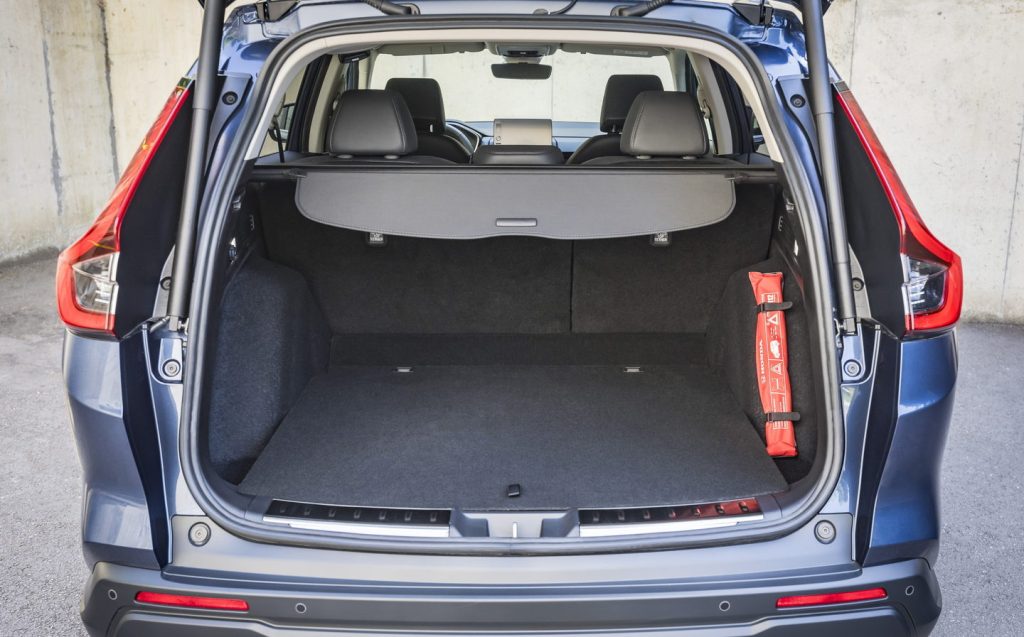
There’s more room for luggage, too, with 598 litres of cargo space in the e:HEV hybrid when all five seats are in use.
Oddly, the e:PHEV plug-in hybrid version, which has a much larger battery, has even more boot space, at 635 litres. That’s because Honda has chosen to hide the big battery under the floor, rather than under the boot. Either way, both cars offer more than enough carrying capacity for most owners’ needs, and they look remarkably roomy alongside most of their rivals.
Technology and safety
Cabin quality may have been among the old CR-V’s weak points, but the weakest point of them all was the outgoing model’s in-car technology. The blocky, clunky touchscreen was out of date before the car was even launched, and it looks seriously behind the times today.
But Honda has paid attention to that aspect of its cars in recent years, removing it from the Jazz, HR-V and Civic with the arrival of the latest generations.
The CR-V was one of the last models to stagger on with the old system, but now that too has been consigned to the history books with the new model.
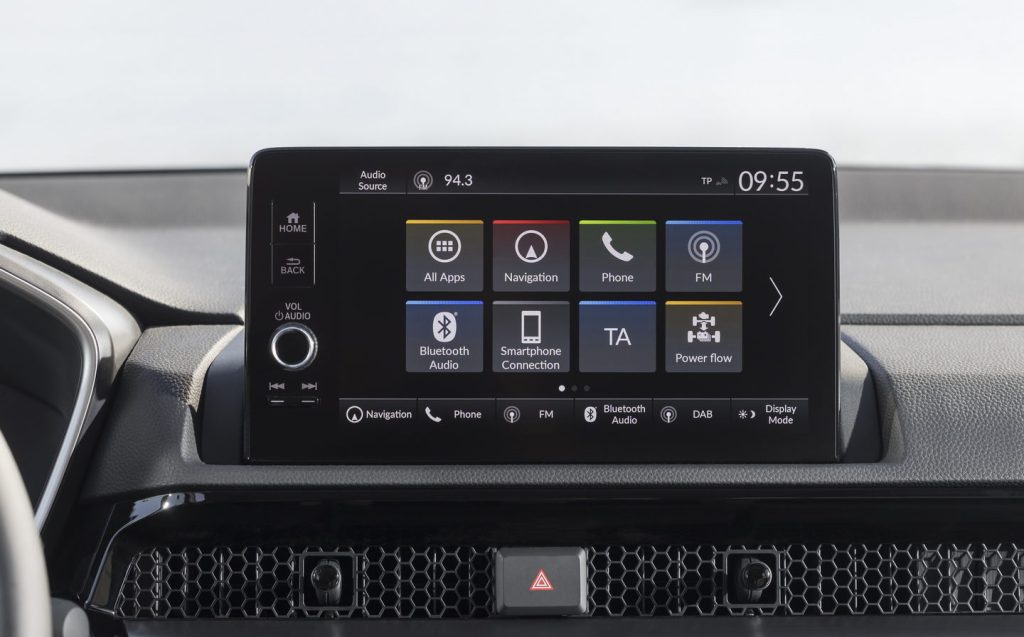
In its place is the much more modern — though still imperfect — screen also found in the Honda Civic and ZR-V, offering a sharper display and more intuitive menus, even if the navigation system is occasionally confusing.
And because the screen resolution has improved, it now works even better with the Android Auto and Apple CarPlay smartphone connectivity technology most drivers will use most of the time.
Equally important is the new digital instrument cluster, also pilfered from the Civic and ZR-V parts bin. It isn’t the fanciest system on the market, and it certainly isn’t a patch on the latest Audi and BMW screens in terms of functionality, but it’s easy to configure and easy to read, which is by far the most important consideration.
If you choose the more upmarket models, you can supplement it with an equally clear head-up display that’s projected onto the windscreen, helping you keep your eyes on the road.
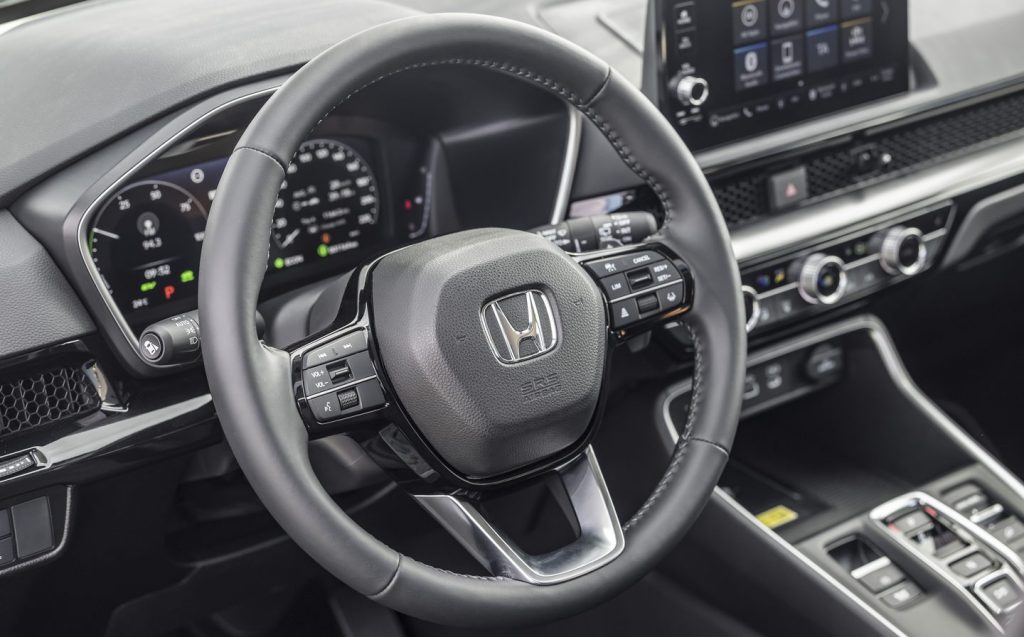
Whether you get the head-up display or not, Honda will provide its latest Honda Sensing 360 driver assistance technology as standard on all new CR-V models, giving you a curtain of sensors that are designed to prevent accidents from happening.
This includes all the usual features, such as lane departure warning and automatic emergency braking that can slam on the brakes if the driver fails to respond to a hazard. It also features a blind-spot monitoring system that will steer to keep the car in its lane if the driver tries to change lane when it’s unsafe to do so.
Performance, power output and acceleration
Unlike the outgoing CR-V, which offered buyers a choice of 2-litre hybrid power or nothing, Honda is giving customers more chance to pick the powertrain that suits them, with both hybrid and plug-in hybrid options available.
What are ‘mild hybrid’, ‘full hybrid’, ‘plug-in hybrid’ and ‘pure-electric’ cars?
Honda has built both around the same 2-litre petrol engine, which is already seeing service in the Civic and ZR-V. However, to cope with the demands of a larger car, Honda has given it one or two upgrades, increasing the power and efficiency, as well as adding a new engine cover to help improve refinement.
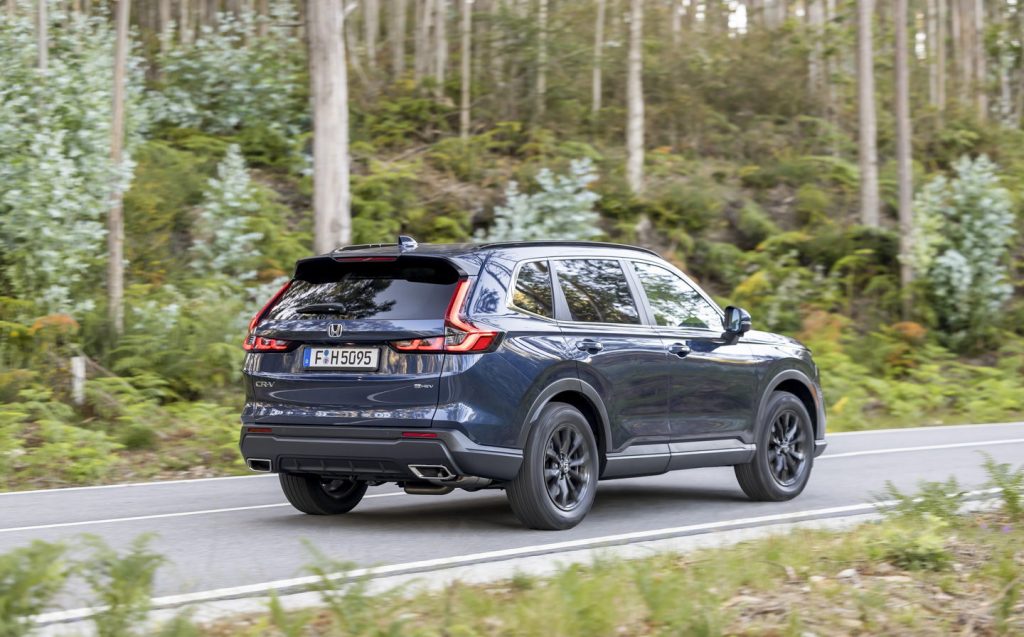
In both the all-wheel-drive e:HEV hybrid and the front-drive e:PHEV plug-in hybrid, that engine is paired with a newly developed gearbox that’s also based on the technology found in the Civic. In the new CR-V, however, the system is capable of producing more torque (twisting force) (up to 247lb ft) despite taking up exactly the same amount of space. It’ll also spin faster than the Civic’s system, allowing the electric motor to drive the wheels at higher speeds.
That’s useful because, most of the time, the electric motor will be the sole source of propulsion. Only at higher speeds will the engine be connected to the wheels directly, with Honda preferring to use it as a kind of on-board power station at lower speeds.
The idea is that when the electric motor is at its most efficient, it drives the wheels, and the petrol engine takes over when the electric motor is in a less efficient operating window.
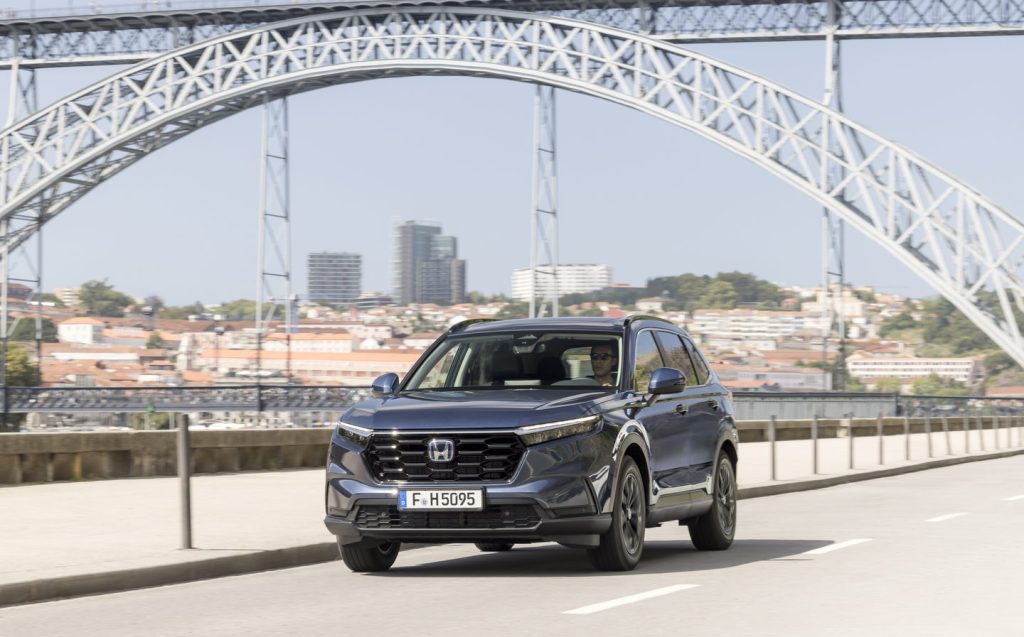
Anyway, the result is a 181bhp output that allows both versions of the CR-V to accelerate from zero to 62mph in 9.4 seconds, which is perfectly adequate for a car of this size, before continuing on to a top speed of 116mph. More importantly, though, the e:HEV model emits just 151g of carbon dioxide every kilometre, keeping tax down, and the official tests claim it’ll manage just over 42 miles on a gallon of unleaded.
The e:PHEV plug-in hybrid powertrain, meanwhile, is different only by dint of its battery and the fact it comes in front-wheel-drive form. It has the same power output as the more conventional hybrid and it works in much the same way, but it has a 17.7kWh rechargeable battery hidden under the floor. That means the e:PHEV can drive for up to 50 miles on electricity alone, allowing it to effectively operate as an electric car on short journeys.
On longer trips, or when the battery charge has been depleted, the petrol engine and electric motors work together to provide propulsion, just as they do in the e:HEV.
Although the performance figures are identical, the official economy figures are anything but.
According to the official WLTP test, the e:PHEV will return 353.1mpg, although that does assume you drive almost exclusively in electric mode; you won’t manage that even at home unless you lead a very particular lifestyle and charge the battery before every trip.
Nonetheless, with that fairly chunky battery and the clever hybrid system, it shouldn’t prove especially costly to run. And company car drivers will be delighted with the 18g/km emissions rating that puts the CR-V in the eight-per-cent company car tax bracket for 2023/24.
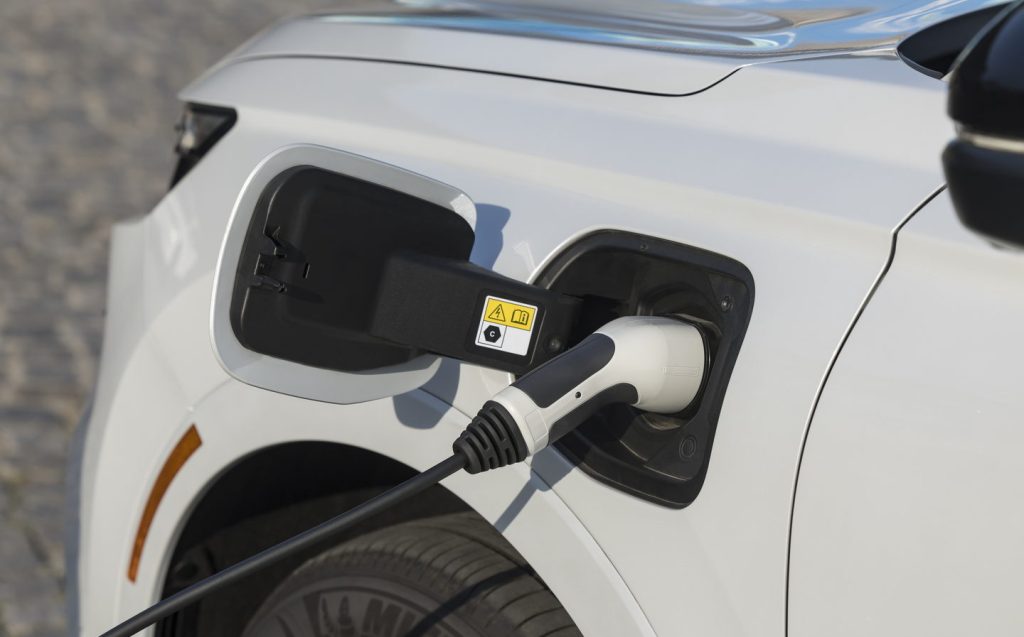
More than that, the e:PHEV is even more refined than the e:HEV system, which has already won plaudits in other Honda vehicles. While it too is hushed and subtle in the CR-V e:HEV, the e:PHEV powertrain is even smoother, and were it not for the little ‘EV’ light on the instrument cluster, you wouldn’t know whether the petrol engine was running or not.
Unless, that is, you start playing with the driving modes that control the battery management. As with most plug-in hybrids, there’s an EV mode that forces the car to use electric power alone as much as possible, and there’s a charge mode that uses the engine to replenish the batteries.
But you don’t really need any of that. Plug a destination into the navigation system and the car can work out the best times to use the electric motor and the petrol engine, allowing it to preserve battery for the times when electric power will be most energy-efficient.
Ride and handling
Perhaps it’s no surprise given the choice of powertrains that the CR-V behaves slightly differently depending on which battery is hidden under the floor. Both the e:HEV and e:PHEV models have their own distinct characters, and we found one marginally more agreeable than the other.
On paper, the cheaper e:HEV will be the natural choice for a number of motorists. The standard four-wheel-drive system will be a draw and the lower asking price will help, but it doesn’t feel as pleasant as the e:PHEV when you get it on the road.
Although it’s lighter, the e:HEV feels a bit jiggly on urban roads, with suspension that seems a little too stiff for the car. It isn’t disastrously uncomfortable, it’s just a little bit firm.
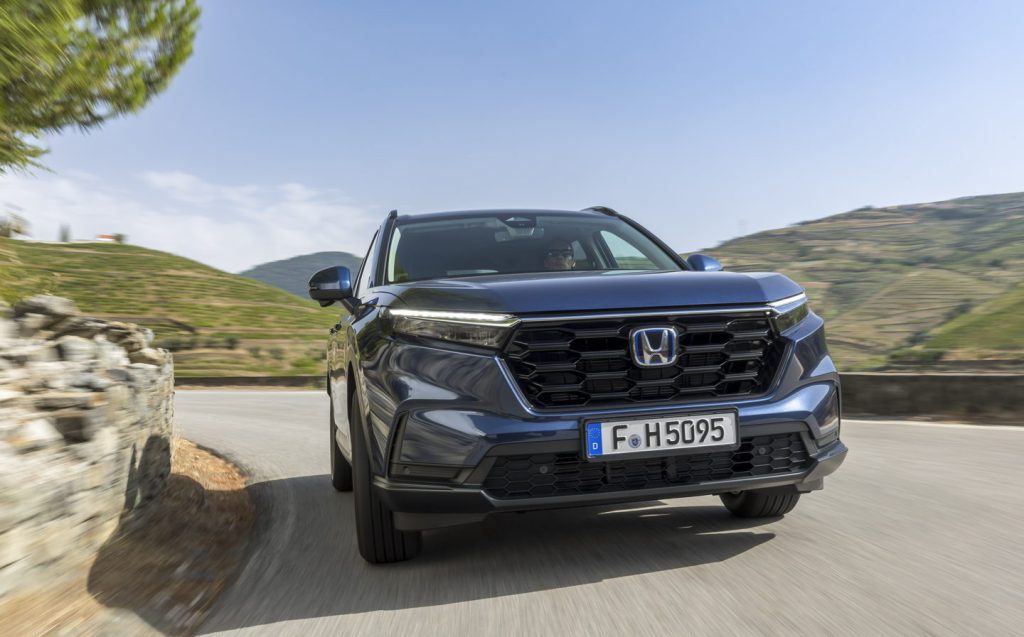
It handles sweetly enough, though, with surprisingly heavy steering that feels really precise and dependable, as well as reasonable control over that bulky body. It isn’t as though it doesn’t roll at all —there’s still a bit of lean in corners — but it doesn’t lurch drunkenly when you throw it into a corner, and that makes life much more pleasant for both driver and passengers.
The e:PHEV, meanwhile, takes some of that handling deftness and adds a bit more weight to the equation. Normally, you might expect that to ruin the CR-V’s characteristics, but for some reason it seems to enhance them. The car feels smoother and more settled over most surfaces and although it isn’t quite as agile, it still feels stable and dependable.
The only real catch with choosing the e:PHEV, then, is the lack of an all-wheel-drive option. With power heading solely to the front wheels, the plug-in car doesn’t have as much traction as the more conventional hybrid. If you live somewhere difficult to access or where it often snows, you might be best served by an all-wheel-drive e:HEV model.
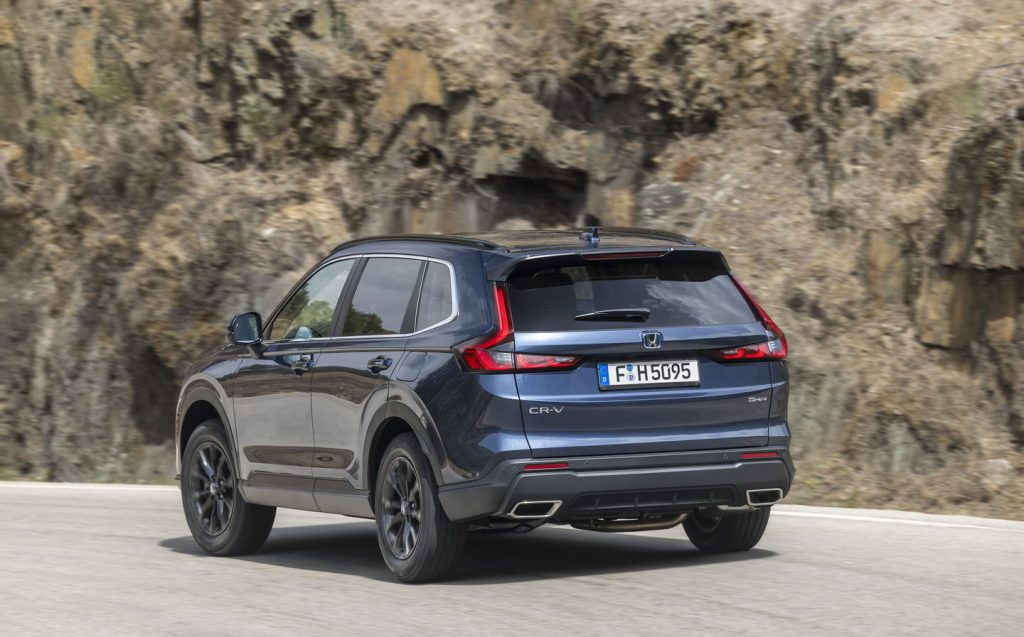
Pricing and on-sale date
Honda is already taking orders for the new CR-V, with the cheapest examples costing just under £46,000. That’s quite a lot of money — particularly when the Toyota RAV4 starts at just under £39,000 — but the CR-V does at least come with plenty of equipment.
Even the ‘basic’ Elegance versions feature leather upholstery, heated front seats and a panoramic glass roof, as well as navigation, a rear-view camera and front and rear parking sensors. The digital instrument display, power-operated tailgate and power-adjustable driving seat are all included as standard, too.
With all that tech included, it’s hard to see where the more upmarket Advance models will add to the list but Honda has installed a Bose sound system, head-up display and ventilated seats to justify the price hike to £48,995, as well as a heated steering wheel and heated rear seats.
Finally, the £53,995 Advance Tech model is the sole plug-in hybrid option, and it more or less matches the Advance model’s equipment list but adds sports bumpers and black alloy wheels — as opposed to the grey found on Elegance and Advance models.
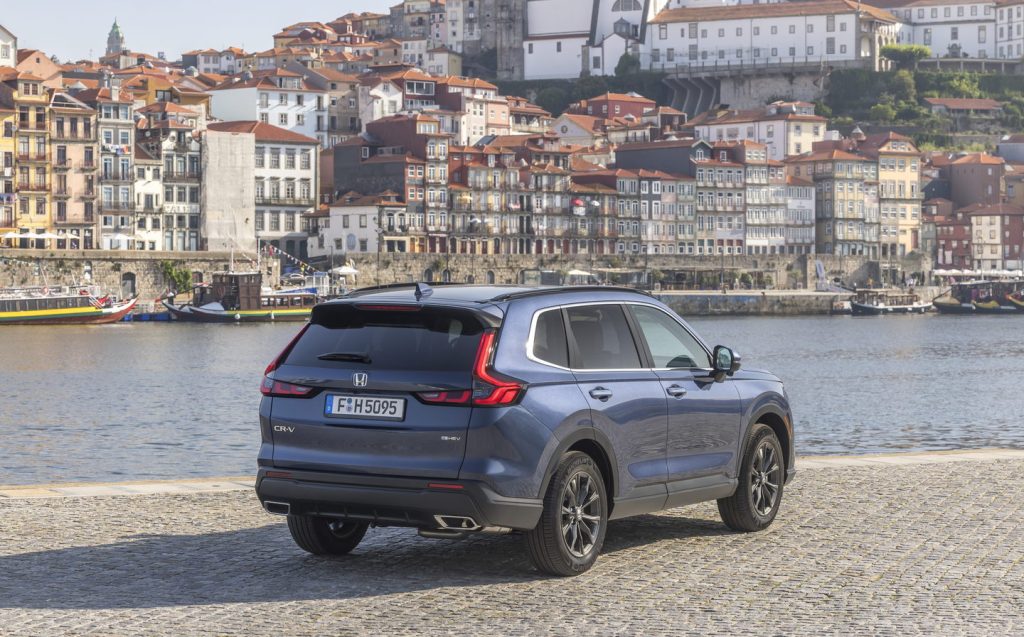
Verdict: Honda CR-V review
With the new CR-V, Honda has managed to eliminate almost all the old car’s weaknesses while still carrying over its strengths. The result is one of the best big, five-seat family SUVs on the market, offering comfort, efficiency and a bit of newfound style — particularly on the inside.
It isn’t the most exciting car on the market, it’s true, but it’ll slot seamlessly into your life, and that’s exactly what you need from a family car.
Admittedly, it’s far from the only car in this class that can do that, but the new model has made the CR-V a much easier car to recommend.
Related articles
- If you found our review of the new Honda CR-V interesting, you might be interested to read about the best mid-sized family cars to buy
- Want to know what the best-selling cars in the UK are?
- You might also like to see our guide to the car makers’ electric vehicle plans
Latest articles
- Should I buy a diesel car in 2025?
- F1 2025 calendar and race reports: The new Formula One season as it happens
- Zeekr 7X AWD 2025 review: A fast, spacious and high tech premium SUV — but someone call the chassis chief
- Denza Z9GT 2025 review: Flawed but sleek 1,062bhp shooting brake from BYD’s luxury arm
- Extended test: 2024 Renault Scenic E-Tech review
- Best-selling cars 2025: The UK’s ten most popular models of the year so far
- Audi A6 Avant 2025 review: Trusty executive estate ticks expected boxes, and there’s still a diesel option
- Keir Starmer eases pressure on carmakers to sell EVs in response to ‘global economic headwinds’
- Ferrari 12Cilindri Spider review: Heady blend of traditional and futuristic becomes even more intoxicating after lid is removed


